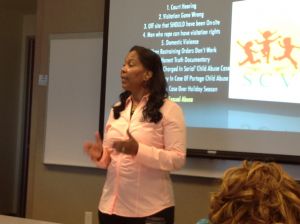What is violation of a visitation order?
Violation of a visitation order occurs when one party fails to comply with the terms and provisions set forth in a court-approved child custody/visitation order. Violations of visitation orders are usually treated very seriously, as the child’s safety or well-being may be endangered through such violations.
Violation of a visitation order may be different than a violation of an informal visitation agreement. In general, a visitation order is usually approved by the court and is enforceable under law. Violating it may lead to legal penalties and consequences. On the other hand, a mere agreement between the parties may not have the full backing of the court’s approval, especially if the agreement was never written down or presented to a judge.
What are some ways that a visitation order can be violated?
Visitation orders can be violated in many different ways. While state regulations may be different from state to state, violations may include:
- Overstaying a visit with the child
- Withholding visitation from the non-custodial parent
- Not dropping off or picking the child at the correct place/time
- Attempting to change the visitation schedule
- Attempting to reduce visiting time of non-custodial parent without courts permission
- Allowing someone else to pick up the child without authorization from the court
- Attempting to visit or contact the child at non-appointment times
In some cases, changes to the visitation schedule may need to be made for legitimate reasons. In such instances, the parties should file to modify the visitation order, rather than attempt to change it without the court’s knowledge or supervision.
What are the consequences of violation of visitation orders?
The legal consequences for violating a visitation order can include:
- Contempt of court (any willful disobedience or disregard for a court order)
- Criminal consequences (this usually happens as a result of repeated violations)
Also, repeated violations of visitation orders can also affect the violating party’s rights in other areas, such as their right to custody in the future. If the party keeps violating a court ordered visitation schedule, it will be reflected in their record and may cast them in a negative light in future court hearings. Thus, violations of visitation orders should be avoided at all costs.
What can you do when a visitation order is violated?
Parents usually violate a visitation order by keeping a child for too long or failing to pick up a child at the right time. You have many options to use if your court order is being violated. Here are a few options:
- Call the police: Call the police if you are unable to resolve the issues on your own.
- Seek Legal Assistance: Alert your attorney about the violations. Your attorney can send a letter notifying the other parent about legal penalties for not obeying the court order.
- File a Motion with the Court: You can file a motion for contempt of court if the other parent continues to violate the court order. You can also request attorney’s fees and other costs with this motion.
What could happen if a parent disobeys a child custody court order?
Disobeying a court child custody order may result in harsh consequences:
- Non-violating parents could petition the court for enforcement of the order.
- Violating parents may need to appear in court and explain why they violated the court order.
- The court could find the violating parent in contempt of court, which could lead to jail time.
- The violating parent could also lose custody rights previously granted by the court.
What are some of the biggest mistakes parents make regarding visitation orders:
- Violating the court order willfully or with disregard
- Withholding visitation
- Repeatedly changing visit schedule for your social or personal needs
- Speaking derogatory about other parent
- Discussing court case with children
- Coaching children to act a certain way or say a certain thing with the other parent
- Interviewing children during or after a visit
- For more information regarding visitation or custody orders, please visit http://www.legalmatch.com/law-library/article/contempt-of-court-lawyers.html

Follow Us!